Related thread:
Indian Police Cars
The Covid-19 pandemic has been wreaking havoc across the country and ambulances are in high demand. Many vehicles have been used as ambulances in India. But, before we get to them, here's a short description of the three types of ambulances that we have in the country.
Basic Life Support Ambulance:
These are used to administer medical care to victims of non-life-threatening illnesses or injuries until they reach the hospital where they can be given full medical care. Such ambulances have trained medical personnel, including emergency medical technicians, paramedics, and qualified bystanders. It contains essentials like a patient bed, a pulse oximeter and oxygen delivery devices. It can also come with auto-loading stretchers and wheelchairs.
Advanced Life Support Ambulance:
These are also known as the Cardiac Care Ambulance. They are equipped with a ventilator, defibrillator, oxygen cylinder, an electrocardiography (ECG) machine and a monitoring device. They are mainly used in the case of life-threatening emergencies including cardiac arrests and conditions which require providing oxygen and respiratory support to critically ill patients.
Patient Transport Vehicle:
These are used to transports patients to and from medical centres. They cater to non-urgent care, such as a visit to the hospital or a dialysis centre. For such instances of non-emergency treatment vans, buses or other vehicles may be converted into ambulances. They are equipped with a patient bed & other basic life-support devices.
Source:
ZHL
Here's a list of vehicles that have been used as ambulances in the country.
Maruti Omni: 
The Omni ambulance was extremely popular in our country a decade ago. The cars were cheap to buy, cheap to run and maintain, easy to drive due to their small size, and had loads of space.
Tempo Matador:  Image Source
Image Source
The Matador was the first diesel powered light commercial vehicle in India. The vehicle was extremely popular and found a variety of applications ranging from school buses to ambulances.
Mahindra Supro: 
Mahindra launched the Supra ambulance in June 2020. It has been built specifically to meet the requirements of the Maharashtra Government to fight the Covid-19 pandemic.
Tata Winger: 
Both the first-gen as well as the second-gen Winger have been used as ambulances. In 2020, Tata donated twenty Winger ambulances to the Brihanmumbai Municipal Corporation (BMC). The vehicles have space for a single stretcher and comply with AIS 125 Part 1 norms.
Force Traveller: 
This is one of the most popular and common ambulances used in India. Some Traveller ambulances are designed to carry 6 medical staff and 4 patients.
Maruti Eeco: 
This is another popular ambulance seen on our roads today. The Eeco became more common after the Omni was discontinued by Maruti. It has loads of space on the inside making it a good choice as an ambulance.
Chevrolet Tavera:  Image Souce
Image Souce
A Tavera ambulance is not as common as the ones listed above. However, I have seen a few hospitals using this vehicle. A hospital near my house in Bengaluru has a Tavera ambulance.
Maruti Gypsy:  Image Source
Image Source
Lightweight and equipped with four-wheel, the Gypsy could be used on any terrain. It is used by the army, and even national parks. A Gypsy ambulance can be used in places with bad roads.
Mahindra Genio: 
Mahindra built an ambulance based on the Genio, a pick-up truck based on the Xylo. It was available in two variants and came equipped with a rearview camera and an externally accessible oxygen tank.
Royal Enfield: 
Royal Enfield built an ambulance based on the Classic 350 motorcycle for the CRPF. The bike has been developed keeping in mind the specific needs of security personnel, especially those posted in Maoist zones. It is equipped to evacuate and attend to the injured.
Chevrolet Enjoy: 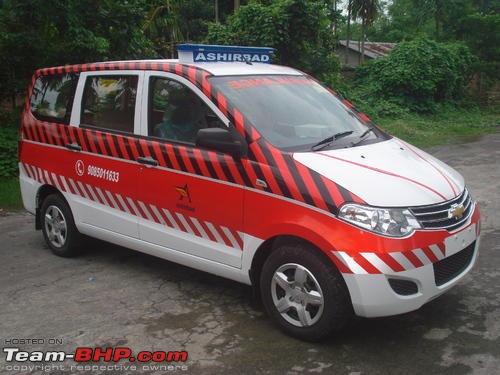 Image Source
Image Source
The Enjoy is not a popular choice with ambulance operators. The vehicle has long been discontinued. Even when the MPV was on sale, it was not very popular.
Mahindra Bolero:  Image Source
Image Source
The Bolero was India's best-selling SUV for a long time, thanks to its rugged appeal. Bolero ambulances are common in rural areas.
Mercedes-Benz W124: 
There are quite a few Mercedes W124s used as ambulances in India. Even the presidential convoy had a W124 ambulance, which was
found abandoned and is now being restored.
MG Hector:  Image Source
Image Source
MG
converted one Hector to an ambulance for Covid-19 patients. It was donated to the CHC hospital in Halol, Gujarat.
Bajaj Avenger: 
Back in 2015, Bangalore got this "first responder" bike ambulance to reach the patients faster. The paramedics were trained to attend to the patients till a four-wheeled ambulance arrives.
ICML Extreme: 
ICML launched an ambulance based on the Extreme MUV, which is a re-badged version of the Rhino. The ambulance is said to be engineered for reliability under trying weather and road conditions.
Polaris Ranger 6x6 800: 
Polaris teamed up with Bafne Healthcare to develop the Ranger 6X6 800. It is designed to ferry patients out of difficult terrains that are inaccessible for regular ambulances.
Hindustan Motors Oka: 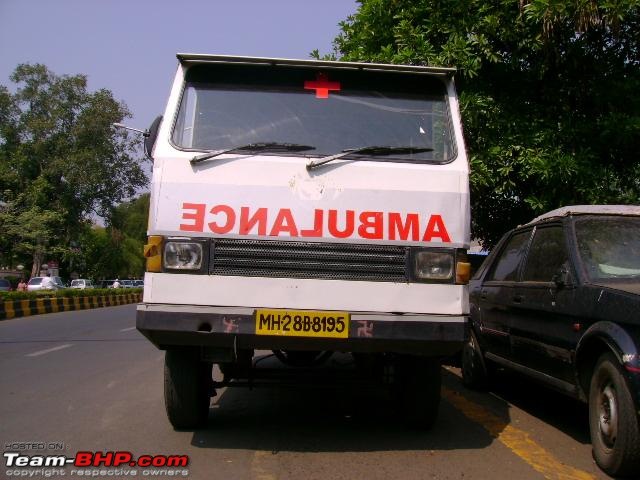
The Oka came out of a collaboration between Hindustan Motors and OKA Motor Company, Australia, to manufacture a Rough Terrain Vehicle (RTV). It was powered by a 2.0L Isuzu diesel engine and equipped with leaf spring suspension.
Hero Xtreme 200R: 
To help in the fight against the Covid-19 pandemic, Hero MotoCorp built a custom side-car bed for the Xtreme 200R. It is equipped with a full-stretcher with a foldable hood mounted on the side, essential medical equipment such as a detachable first-aid kit, oxygen cylinder, fire extinguisher and other safety features such as LED flasher lights, foldable beacon light, emergency wireless public announcement system, and siren.
Toyota Innova: 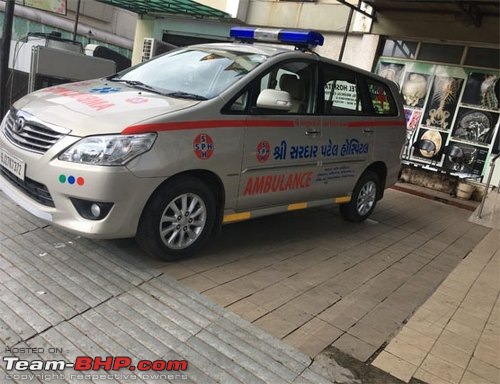 Image Source
Image Source
Some hospitals used the Innova as an ambulance. Ambulance service providers need not worry about reliability if they have an Innova. However, I haven't seen many Innova Crysta ambulances. This is probably due of the high cost of the vehicle.
Ford F350 
This well-equipped Ford F350 was imported into the country in June 2009 and was seen abandoned soon after. The ambulance is a completely self-sustaining mini-hospital. I am not sure of the condition of the vehicle now.
Mercedes Sprinter: 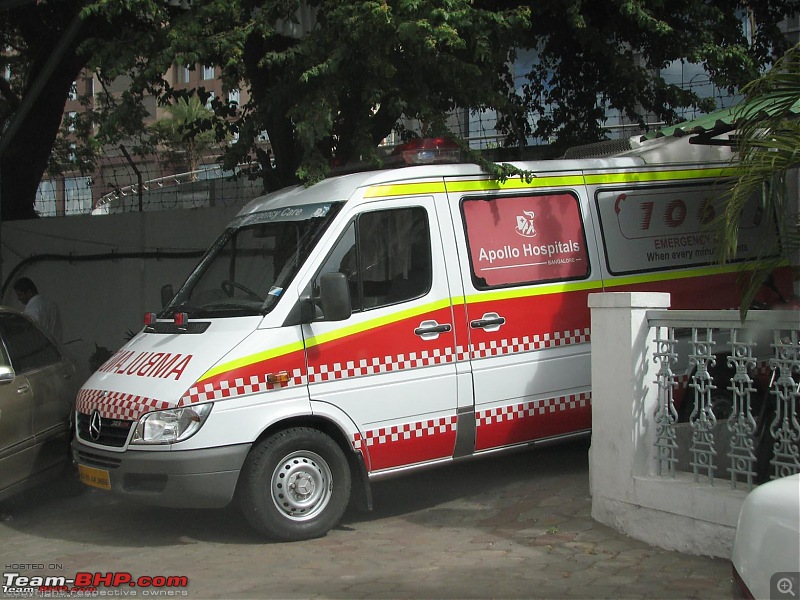
Very few hospitals use(d) an imported Mercedes Sprinter as an ambulance. This one belonged to Apollo Hospitals in Bangalore.
Swaraj Mazda: 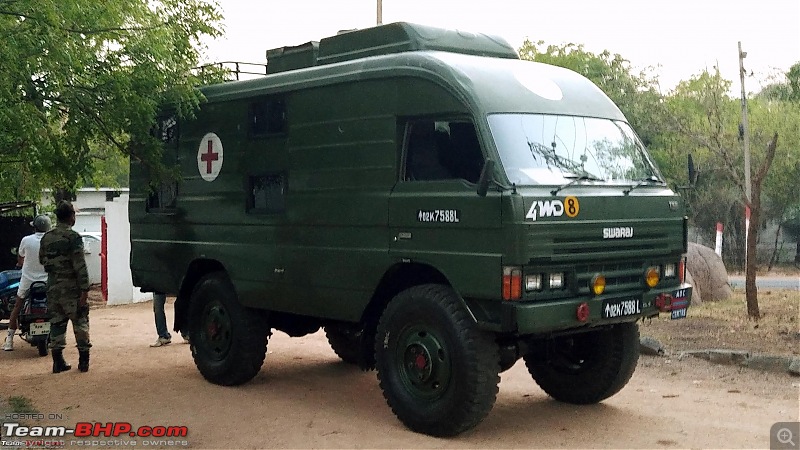
Swaraj Mazda, now renamed as SML Isuzu, built ambulances which are used by hospitals as well as the Indian army.
Ashok Leyland Dost: 
The Dost is a small commercial vehicle launched in 2011. It has multiple applications and has even been used as an animal ambulance.
Force Trax: 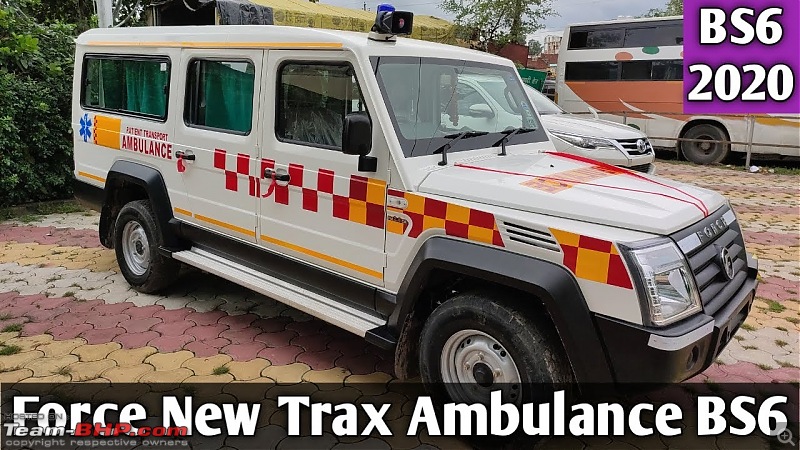 Image Source
Image Source
The Trax is a popular people carrier in rural India. The vehicle has lots of space on the inside making it a good candidate for an ambulance as well.
Tata Sumo: 
Along with some private hospitals and ambulance service providers, the Sumo has been used as an ambulance by the Indian army.
Nissan Jonga: 
The Jonga was a popular vehicle used by the Indian army. A few of them were used as ambulances as well.
1938 Dodge Ambulance: 
This one's from the British era. Kolkata's Tollygunge Club has this 1938 Dodge ambulance.
Volkswagen Microbus: 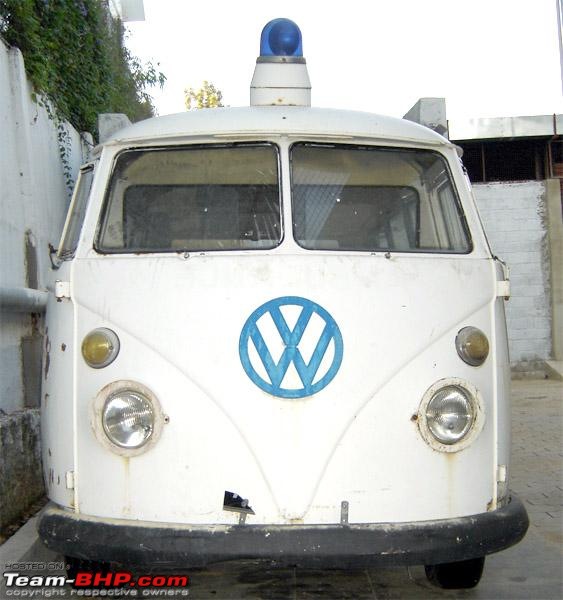
The vehicle pictured here is a 1966 Volkswagen Microbus. It is said to be an original factory-supplied ambulance. One Microbus ambulance was also seen in a movie.
Citroen 2CV: 
This
1972 2CV was imported by St. Joseph's convent in Jolarpet, Tamil Nadu. It is used for medical camps in remote villages. It has a compartment with a sterilization box.
Air Ambulance:
As their names suggest, a patient is transported by an aircraft. These are useful when a patient needs to be moved from one city to another, or from a remote area of the country into a metropolitan space. Air ambulances are most used in case of medical tourism - when a patient needs to be moved to another country for medical aid. They can be useful in multiple situations including a trauma scenario, mass disaster or any other medical emergencies.
 (48)
Thanks
(48)
Thanks

 (3)
Thanks
(3)
Thanks
 (4)
Thanks
(4)
Thanks
 (11)
Thanks
(11)
Thanks
 (9)
Thanks
(9)
Thanks
 (7)
Thanks
(7)
Thanks
 (3)
Thanks
(3)
Thanks
 (18)
Thanks
(18)
Thanks
 (10)
Thanks
(10)
Thanks

 (10)
Thanks
(10)
Thanks
 (5)
Thanks
(5)
Thanks
 (5)
Thanks
(5)
Thanks
 (4)
Thanks
(4)
Thanks
 (1)
Thanks
(1)
Thanks
 (4)
Thanks
(4)
Thanks



































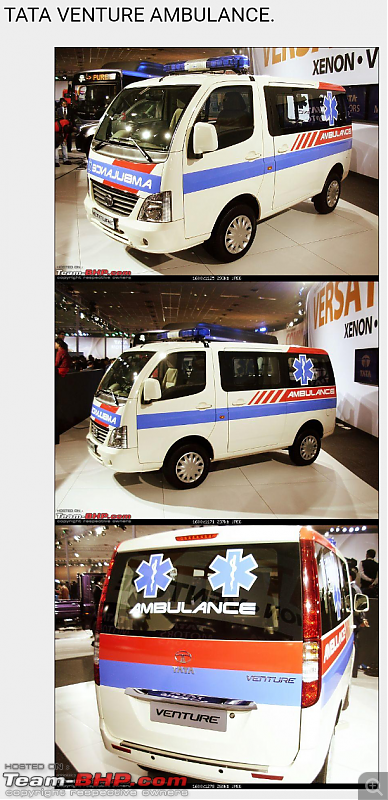



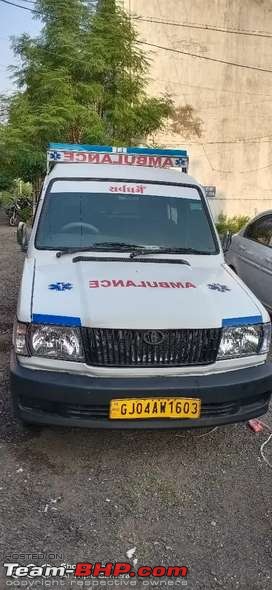





 )
) 



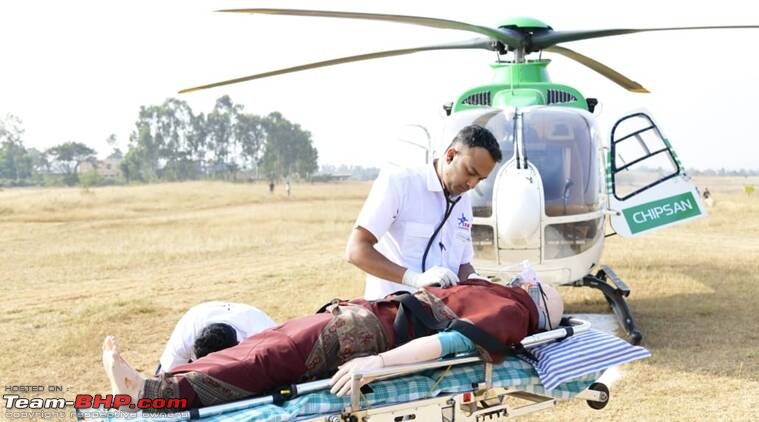
 Are there any pictures/videos of the real usage of this bike in action with a patient?
Are there any pictures/videos of the real usage of this bike in action with a patient? 